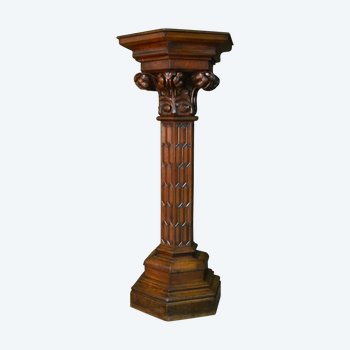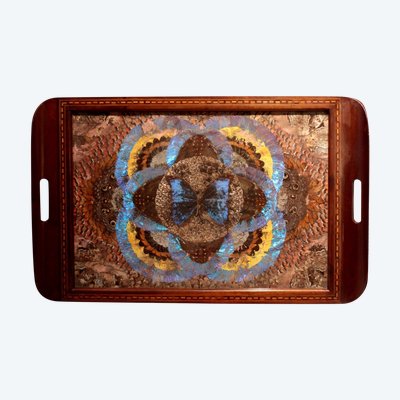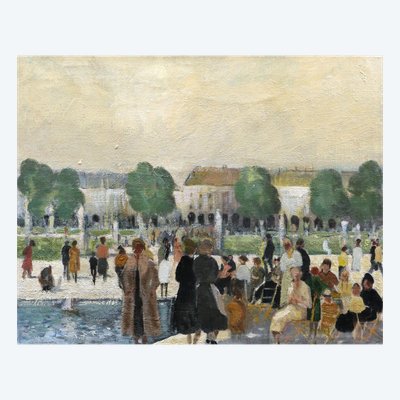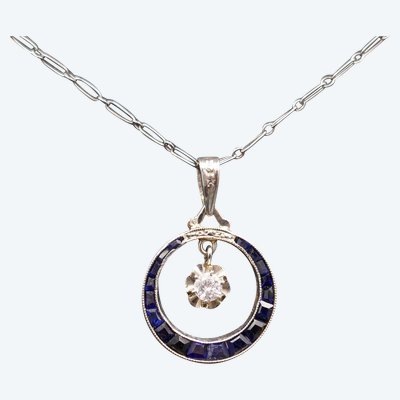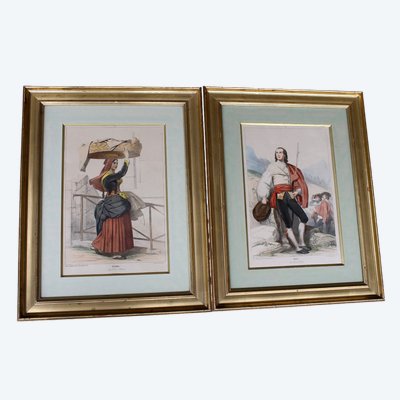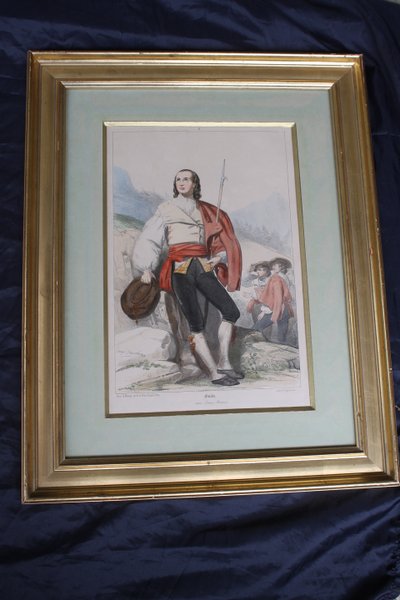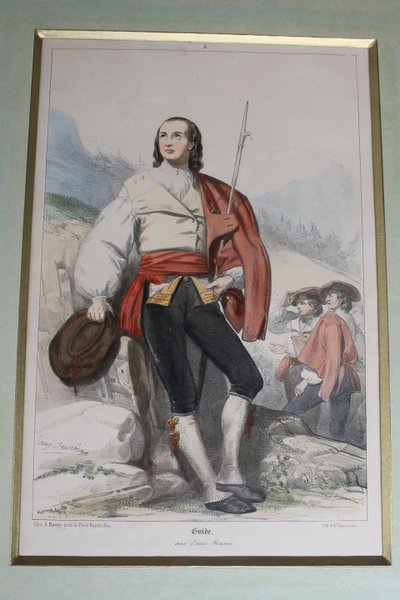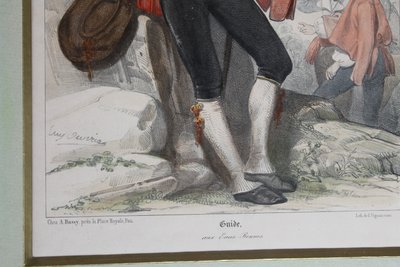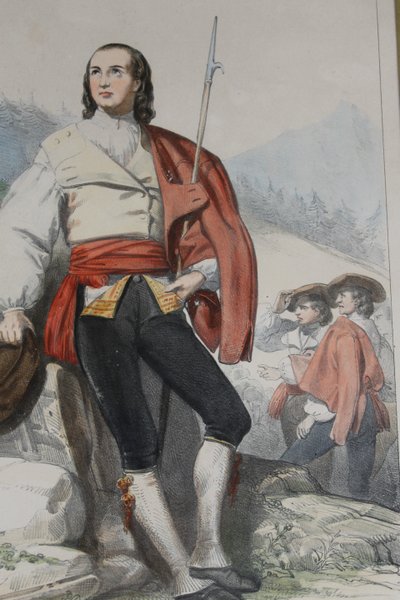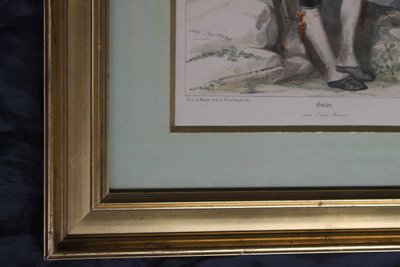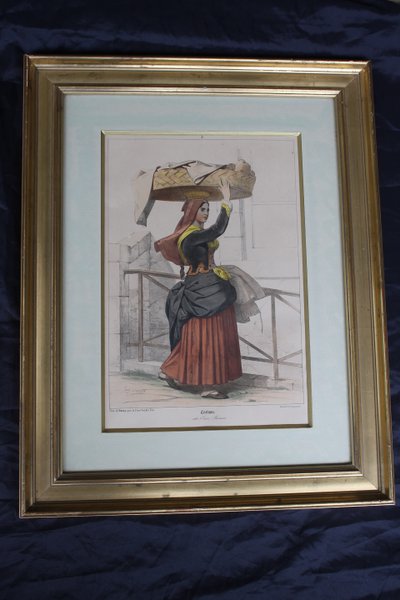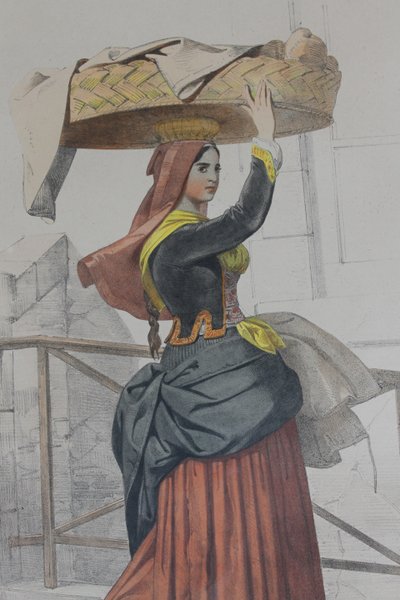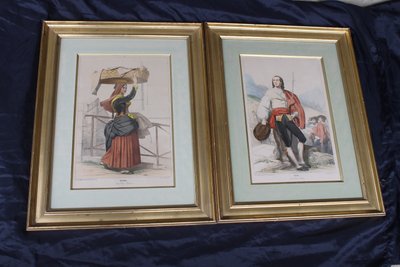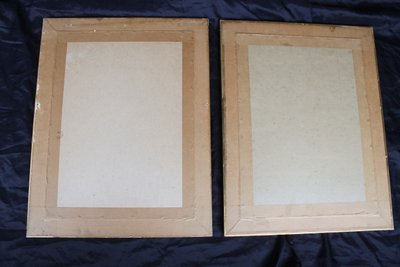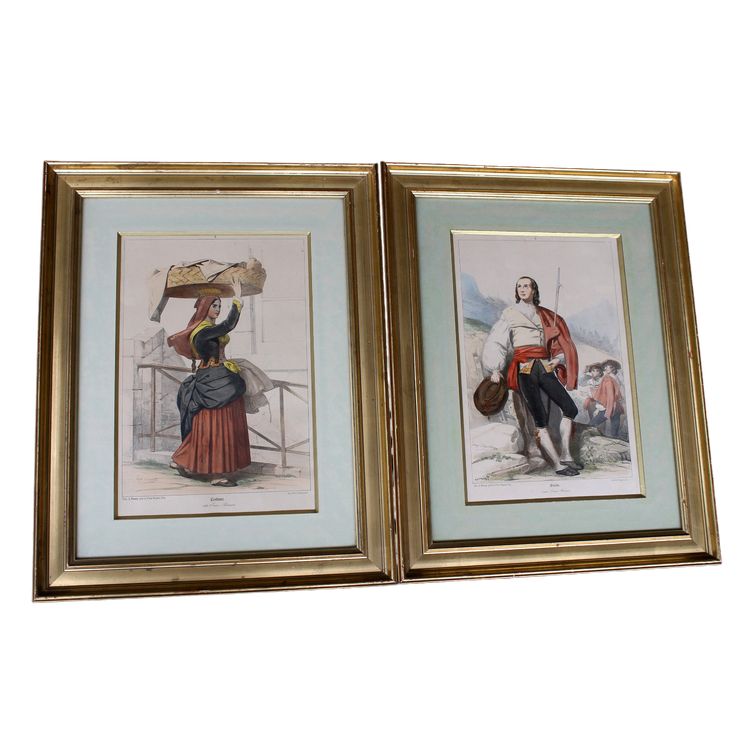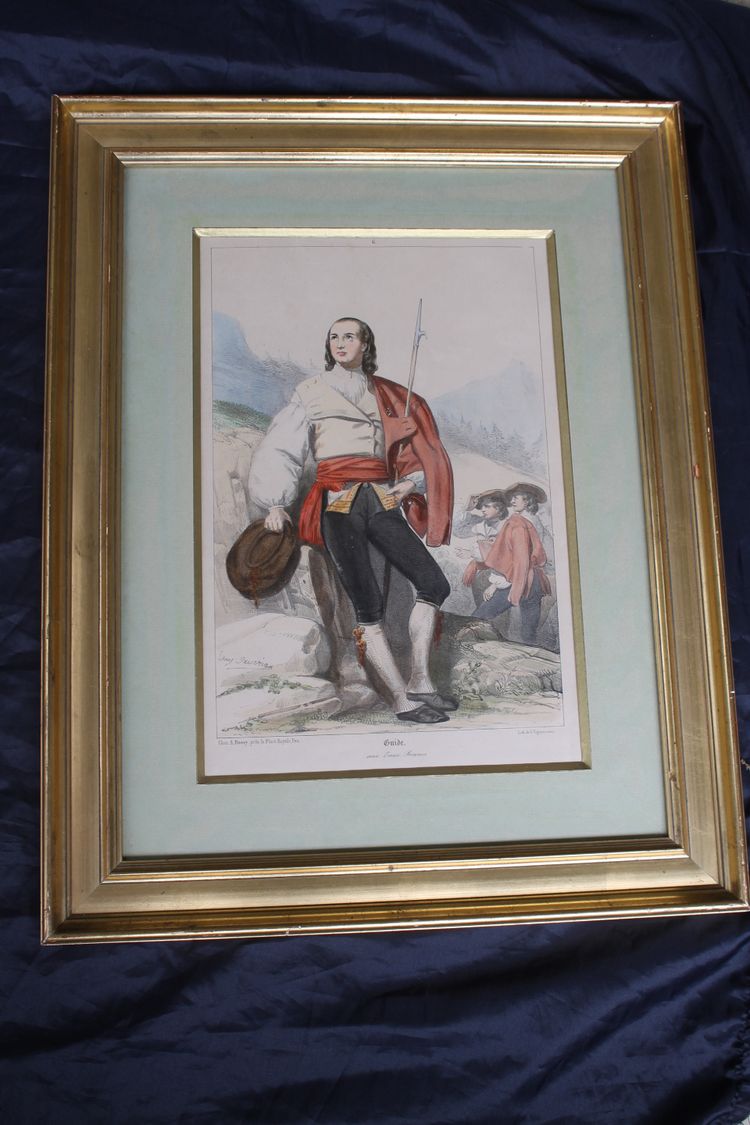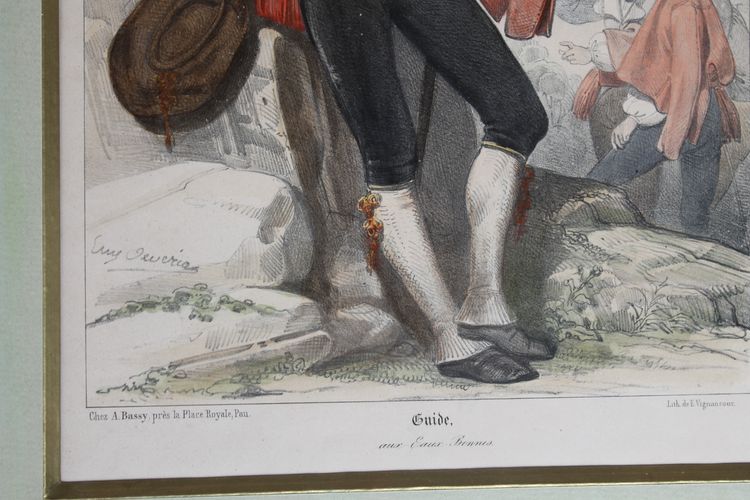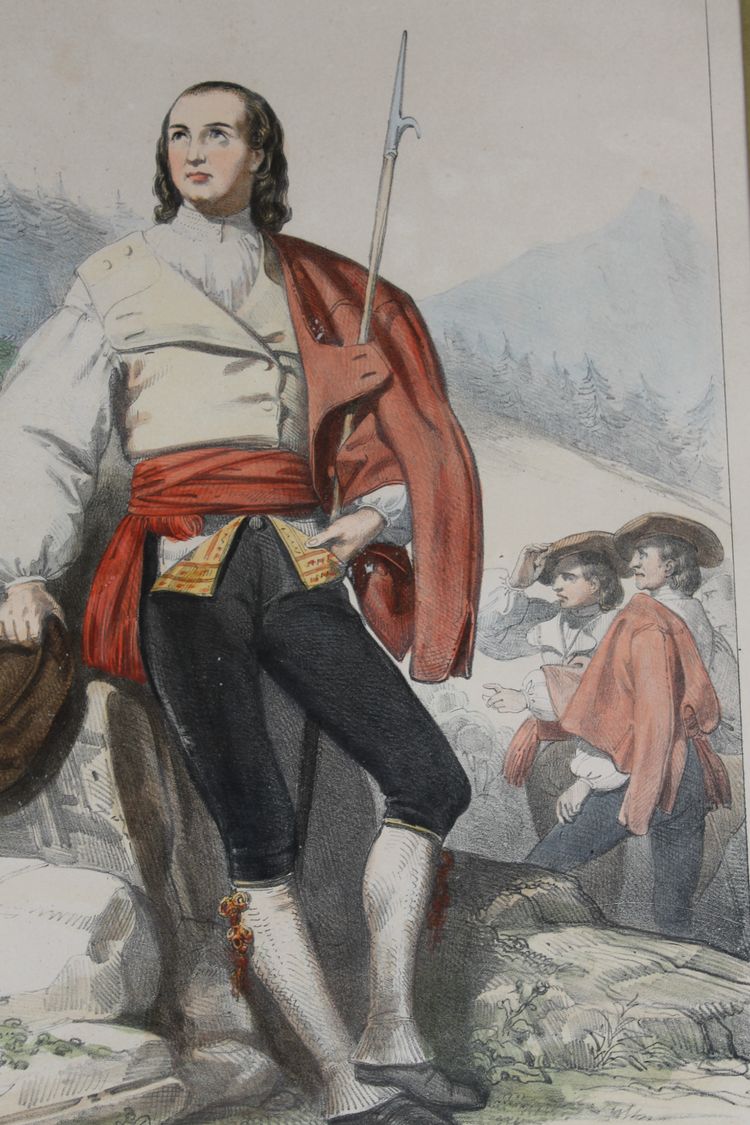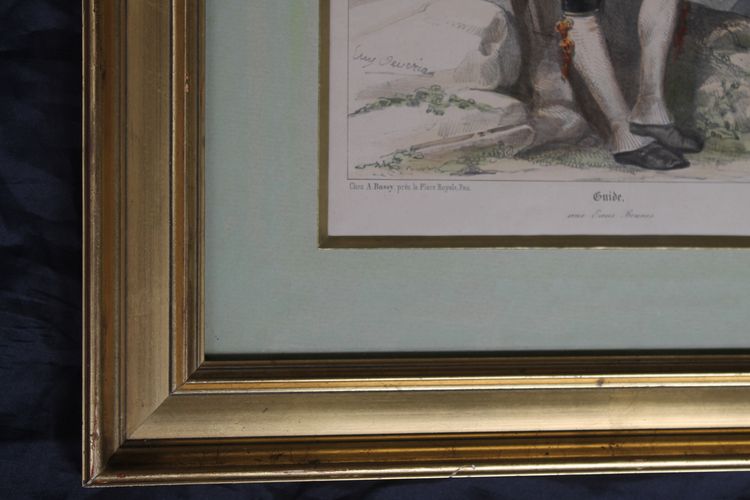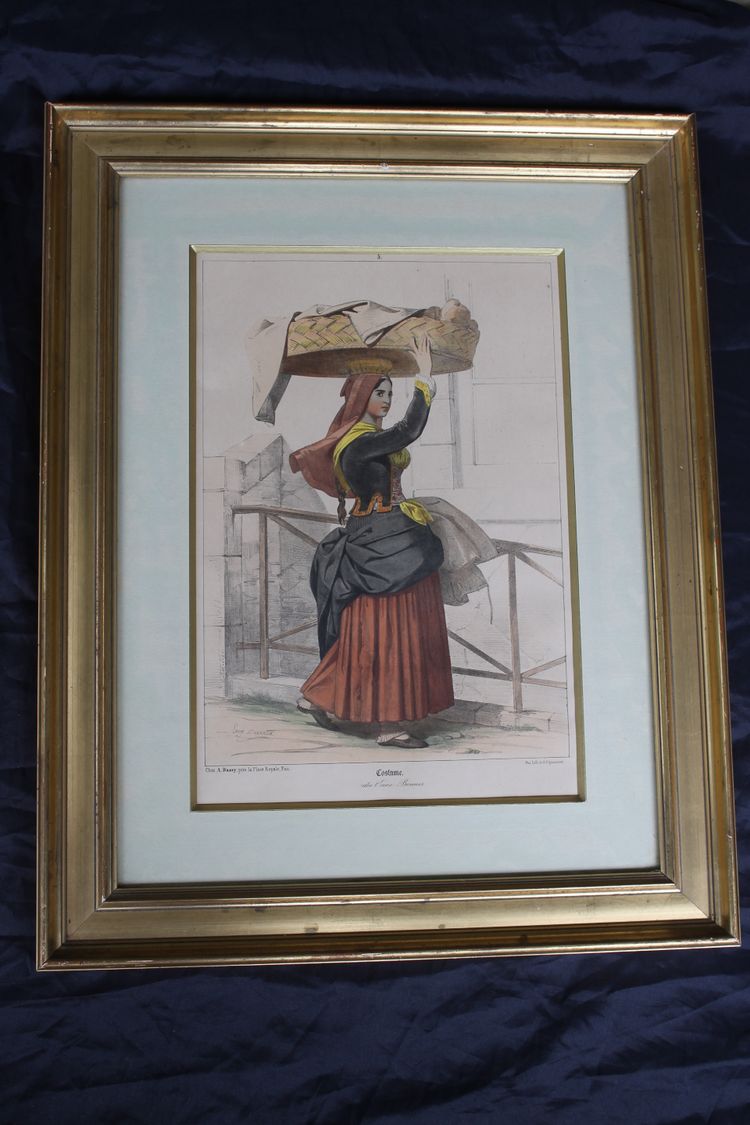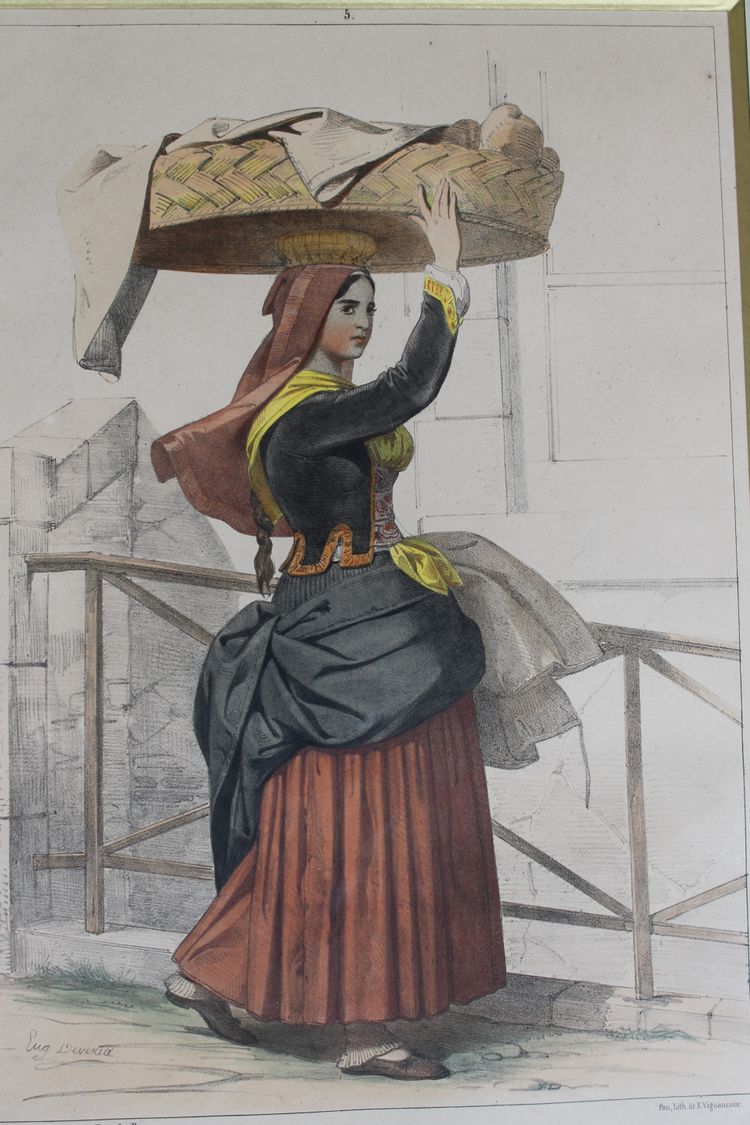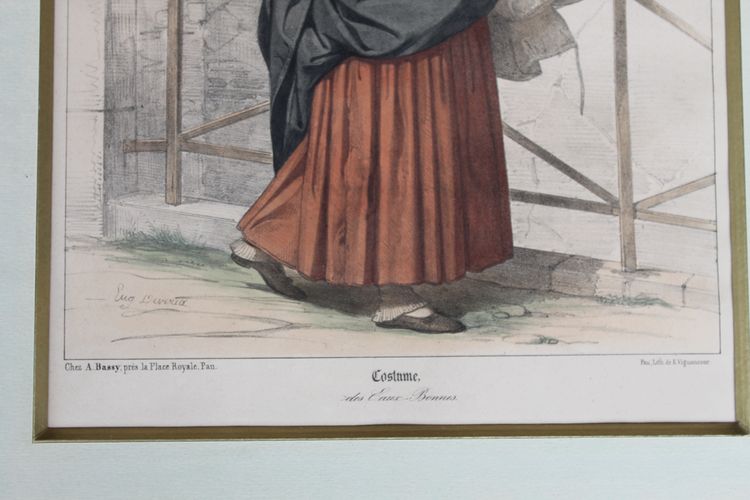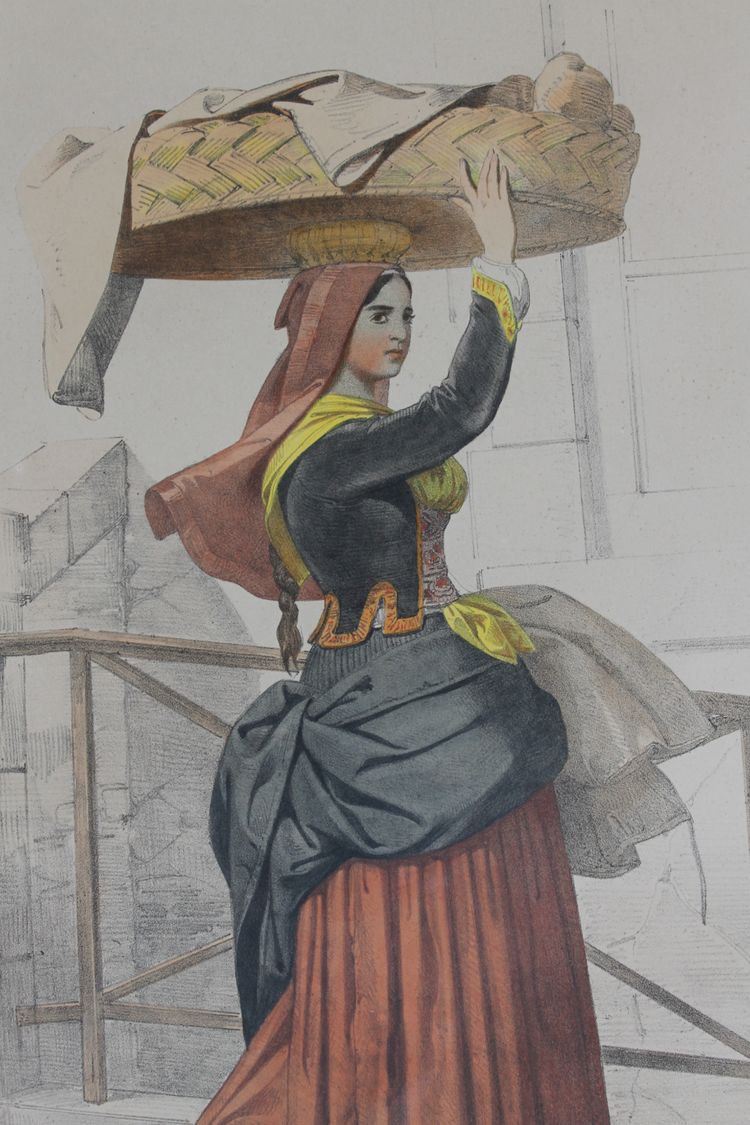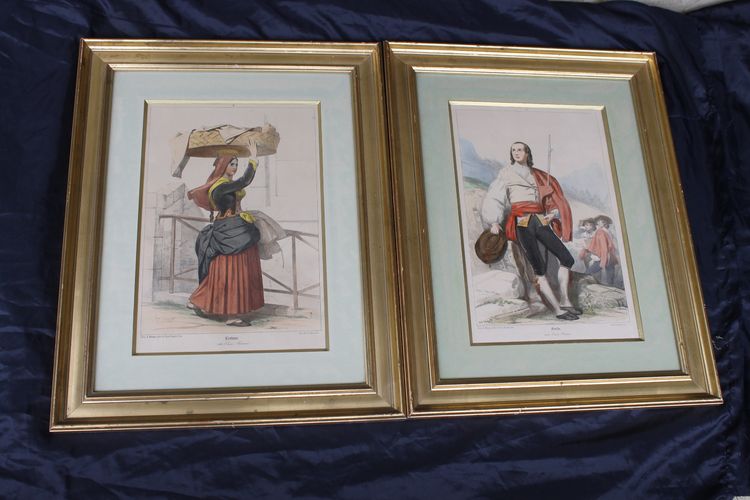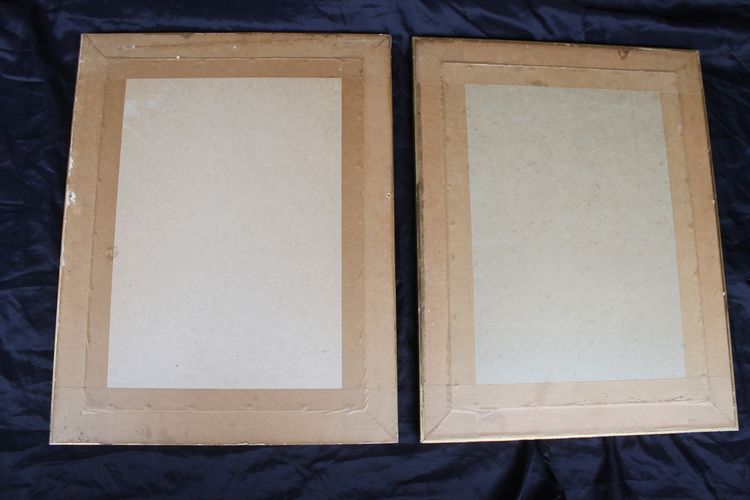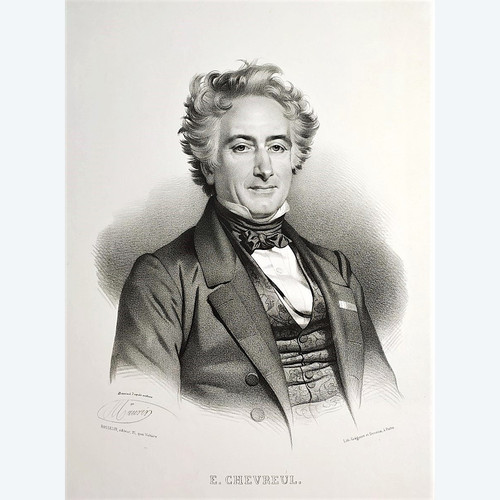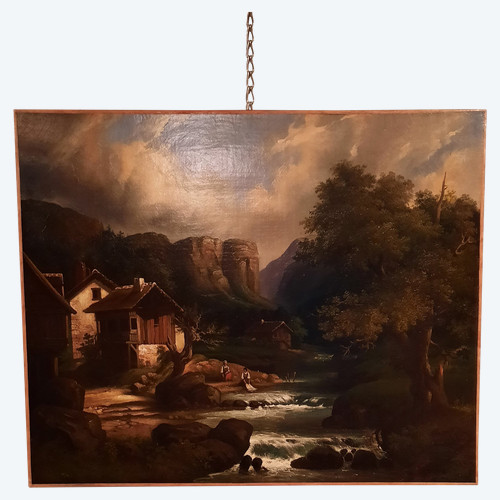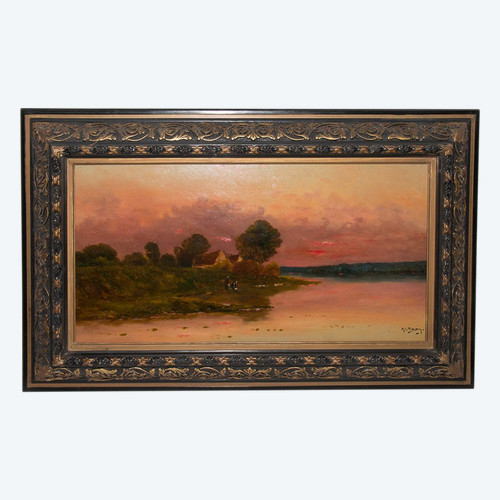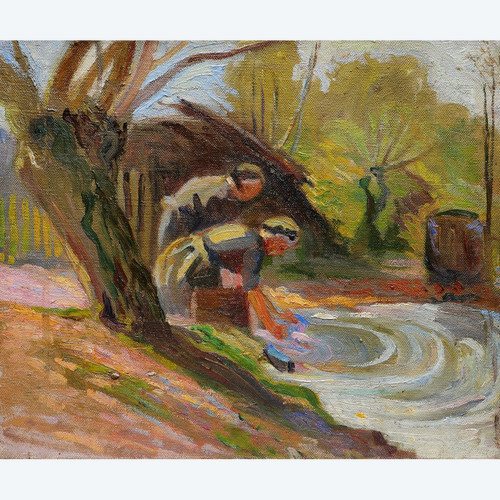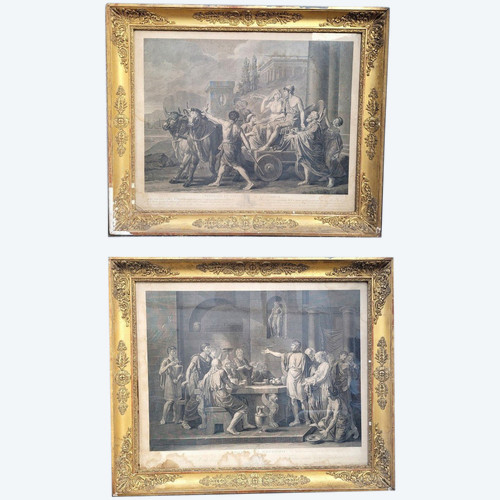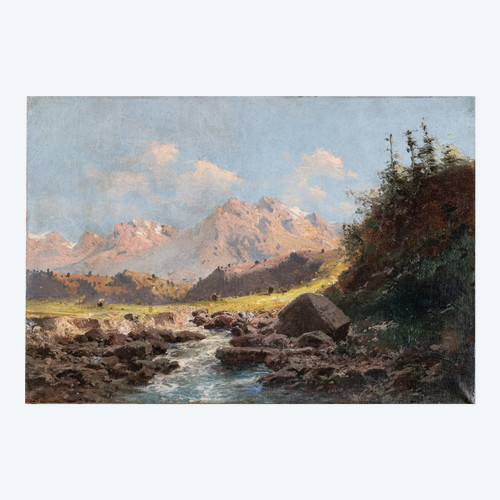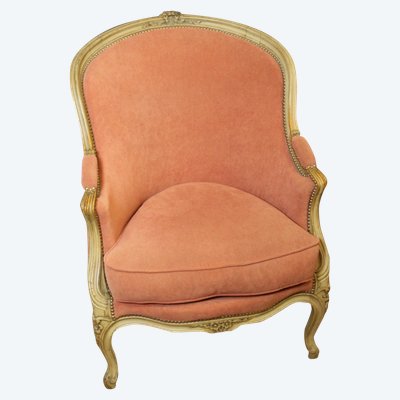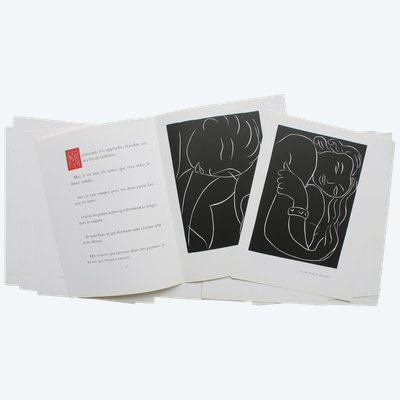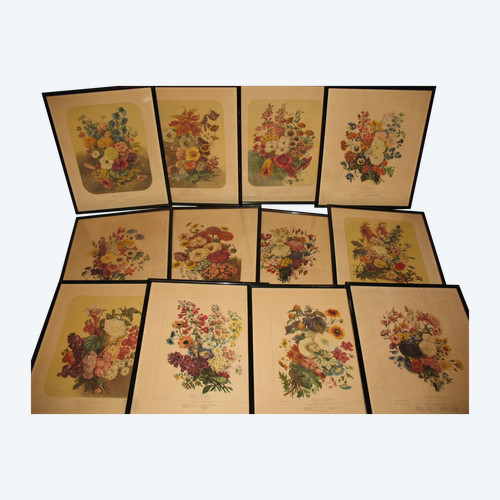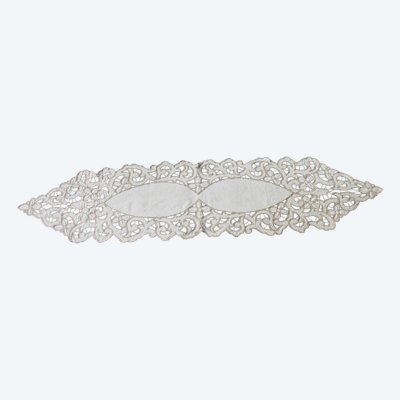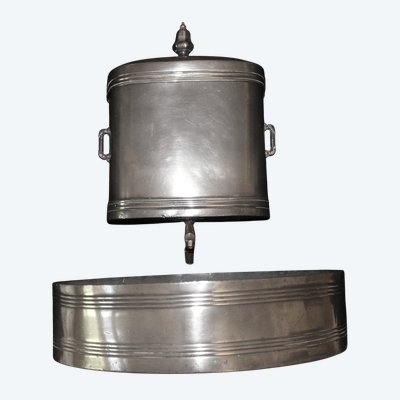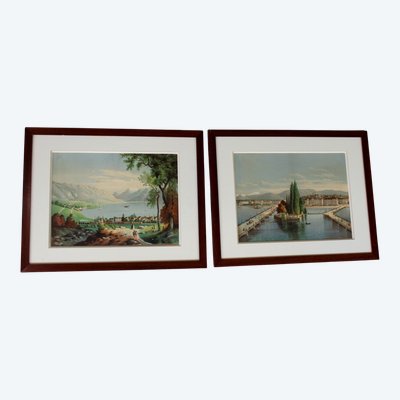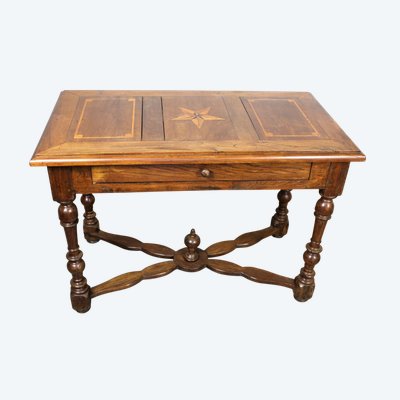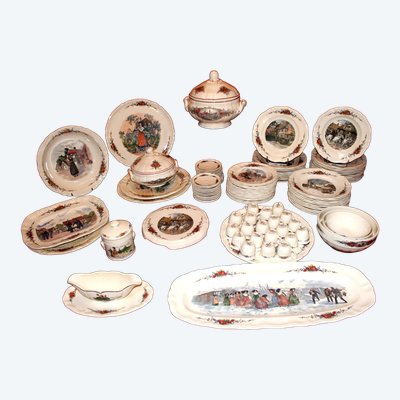This description has been translated and may not be completely accurate. Click here to see the original
Couple from Eaux-Bonnes in the Pyrenees by Eugène Déveria (1805-1865) framed 19th century lithographs
Lithographs produced by E. Vignancour at A. Bassy's near the Place Royale in Pau.
Mountain guide on Pyrenean landscape background
Washerwoman in typical costume
Fresh colors
Very fine framing
Very good condition
length: 58.5 cm each
width : 46,3 cm each
View: 37.5 x 25.1 cm each
Biography:
Eugène Devéria was born in Paris on April 22, 1805.
He was the son of François-Marie Devéria, office manager at the Ministry of the Navy, and Désirée François-Chaumont, a native of Saint-Domingue whose family had been ruined by the Revolution. The Devéria family had five children: Achille, Désirée, Octavie, Eugène and Laure. This large family of modest means was quickly taken in hand by Achille, whose talents as an illustrator and hard work ensured a regular income. It was a family of artists, with not only Achille and Eugène, but also Laure, the youngest daughter, showing real talent for drawing and exhibiting successfully at the Salon. She died prematurely in May 1838.
In the years 1820-1830, the Devéria family's Parisian home attracted artists and musicians: "Romanticism was at home...", the poet Théophile Gautier, Eugène's great friend, would recall years later.
Eugène Devéria showed an early aptitude for drawing; his brother Achille, whose pupil he was, first sent him to the Beaux-Arts in Paris, where he studied under Girodet-Trioson and Guillaume Guillon Lethière. The artist's only known Académie is in the Musée Bertrand in Châteauroux.
Eugène Devéria's first submissions to the Salon date from 1824, but received little attention. In 1827, however, his monumental painting La Naissance d'Henri IV was a triumph. His studio was located at no. 7, rue de l'Est, in the house of the statuary Cartellier, which also housed the sculptor Louis Petitot; the artist occupied the fourth-floor studio he shared with Louis Boulanger, who was finishing his Mazeppa, while Eugène worked on his Naissance d'Henri IV. Eugène, who had been a regular visitor to Victor Hugo since 1824 with his brother Achille, drew inspiration for the subject of his painting from a short story by Victor's brother Abel Hugo, published in Le Conservateur littéraire in 1820.
At the time, Eugène Devéria was one of the brightest hopes of the nascent Romantic movement. No debut was brighter or more promising. When the Naissance d'Henri IV was exhibited, it was thought that France was about to have its own Paul Veronese, and that a great colorist had arrived. "The artist who began with this master stroke was barely twenty-two years old..." wrote Théophile Gautier in 1874 in his Histoire du romantisme.
Following this success, the young painter received numerous official commissions: a painting for the ceiling of a room in the Louvre, entitled Puget presenting his Milon de Crotone to Louis XIV; portraits of historical figures for the Musée de l'Histoire de France that Louis-Philippe wanted to create in Versailles; he took part in the construction of the Notre-Dame-de-Lorette church in Paris and that of Fougères in Brittany... But the triumph of 1827 was not to be repeated, and in 1838 he accepted a proposal to leave the capital for Avignon, where he was to redo the entire painted decor of Notre-Dame-des-Doms cathedral. The scale of the task, the insalubrious conditions and a dramatic flood exhausted the painter, who, ill and weakened, left the papal city to recuperate in Béarn. In Orthez, he pencilled portraits of two well-known local Protestants, whom he visited several times: Pastor Jacques Reclus and his wife Zéline. In 1849, he portrays their son Élisée Reclus.
In 1841, having recovered, he settled permanently in Pau, where he remained until his death. He brought his family with him: his wife Caroline-Aglaé Lavie du Rauzel, his daughter Marie (1831-1856) and his niece Carry Chaumont, whom he raised as his own child. In 1845, another of his nephews, Théodule, joined this blended family for several years. To support his household, Eugène Devéria gave drawing lessons, painted portraits of wealthy winterers in Pau or, during the summer, visited the spa town of Eaux-Bonnes, offering curists portraits and picturesque scenes. He devoted many of his works to the Pyrenees, both genre scenes and portraits. At the same time, he continued to send paintings to Paris on a regular basis. His last submission to the Salon dates from 1861: La Réception de Christophe Colomb par Ferdinand et Isabelle (The Reception of Christopher Columbus by Ferdinand and Isabella).
Eugène Devéria died suddenly in Pau on February 3, 1865.
Ref: P197AESDIJ
 Gothic style oak column
850 € EUR
Gothic style oak column
850 € EUR

